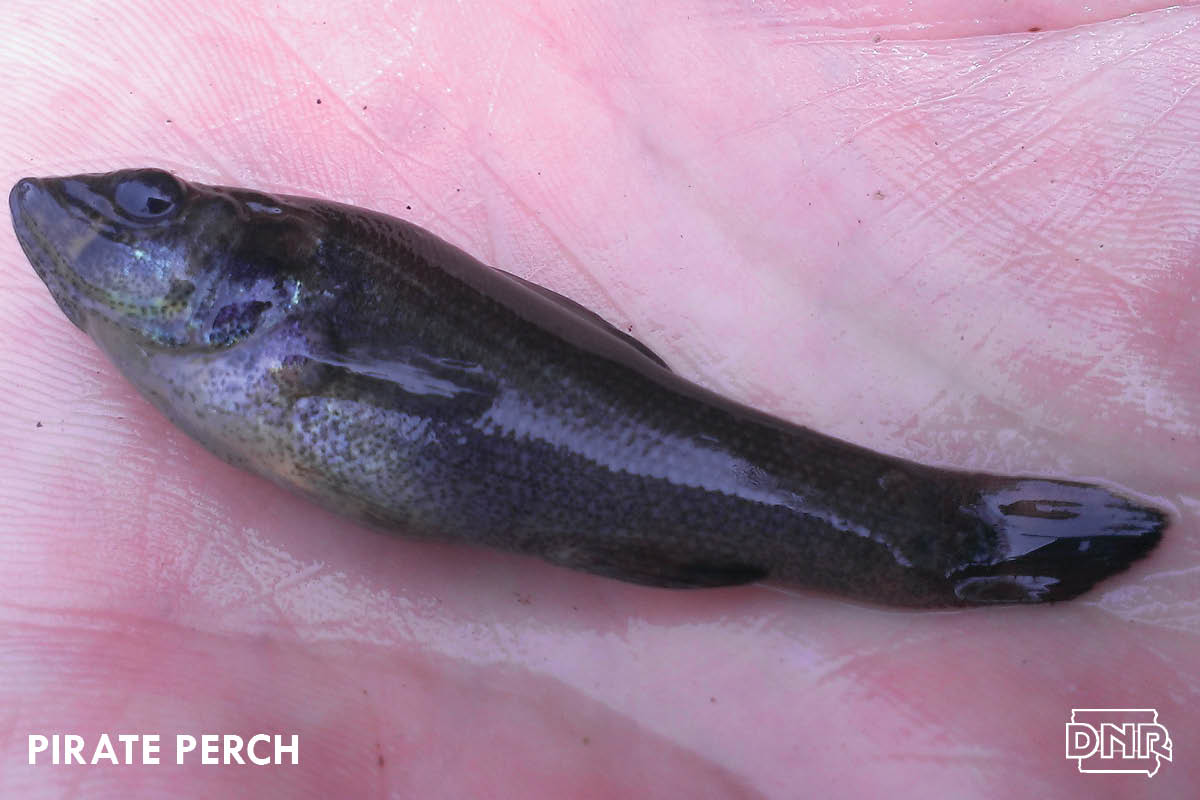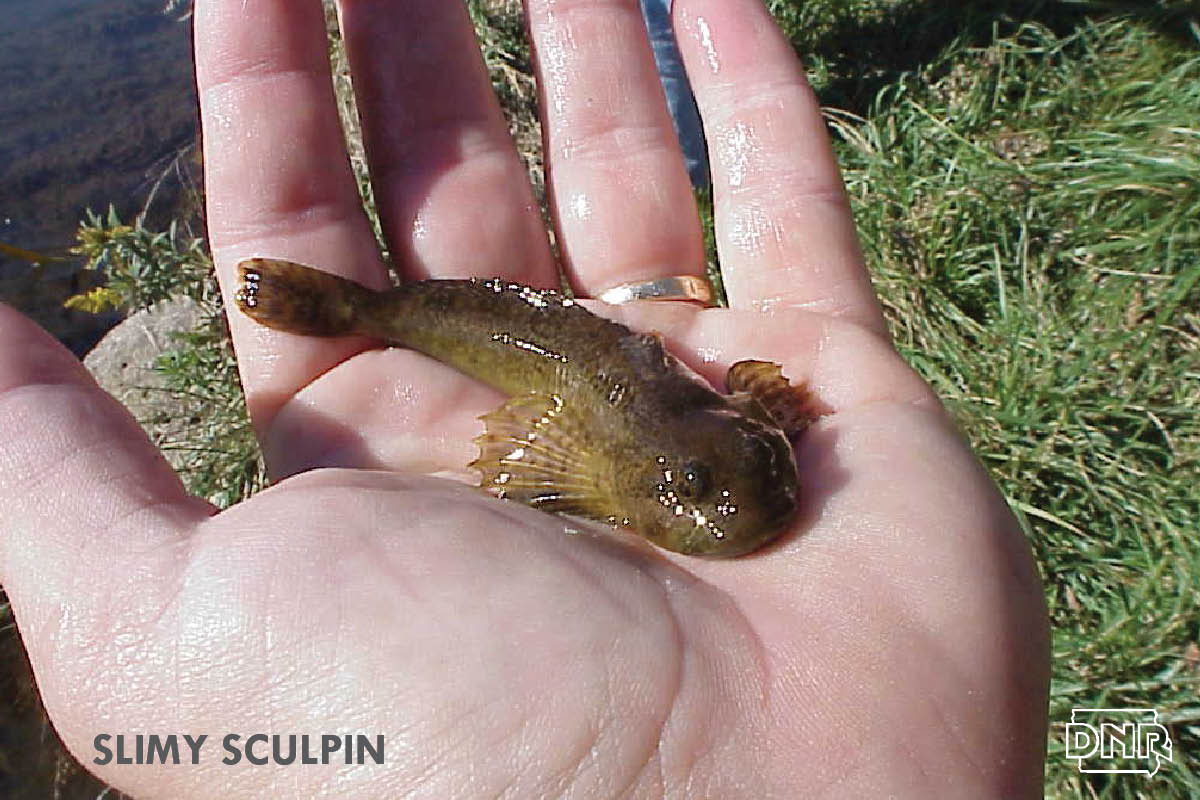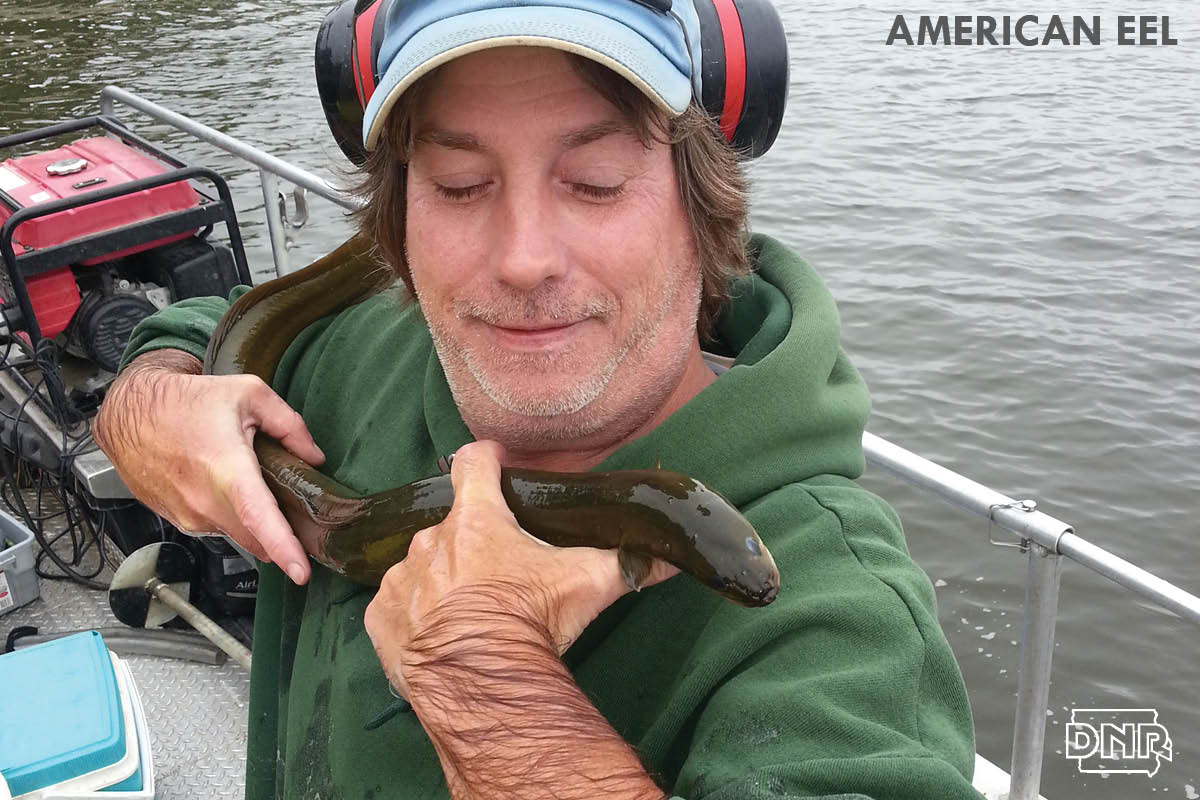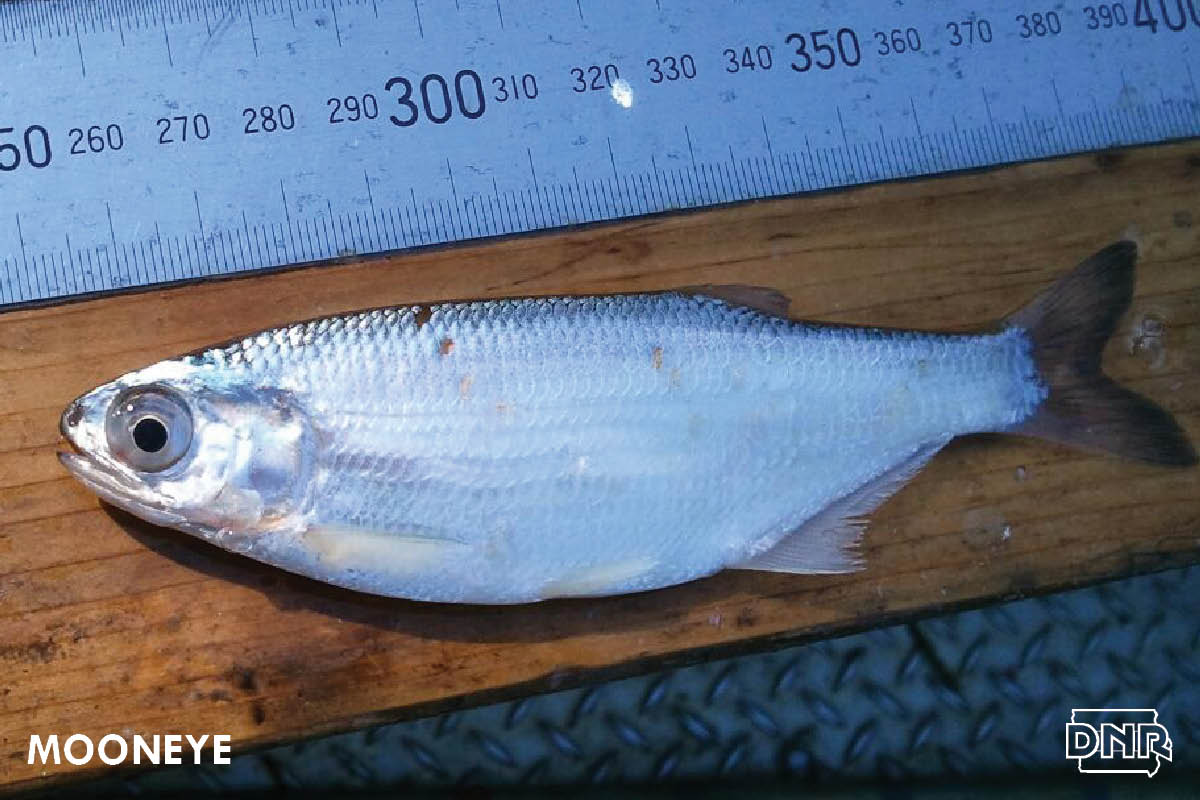 You might know a largemouth bass from a smallmouth bass, a crappie from a bluegill – but how about a pirate perch and a trout-perch? What is a slimy sculpin anyway? Read on to learn about Iowa’s lesser-known and rarely seen fish.
You might know a largemouth bass from a smallmouth bass, a crappie from a bluegill – but how about a pirate perch and a trout-perch? What is a slimy sculpin anyway? Read on to learn about Iowa’s lesser-known and rarely seen fish.
Pirate perch
There’s no eye patch, peg fin or parrot perched on its tail, so you’ll have to identify the pirate perch by its dark olive to black color. Its sides are a bit lighter and speckled with black and its belly is yellow. That is, if you can find one, as they’re pretty rare to see in Iowa. A species of special concern in Iowa, the pirate perch lives mostly along the Mississippi River and several tributary rivers, usually in backwaters and quiet pools. It munches at night on aquatic insects, small crustaceans and sometimes on small fish. Unlike many other fish, its anus is far forward of the anal fin on adults and located on its throat. The fish rarely grow past a length of five inches.
Slimy sculpin
Found only on the stream bottoms of northeast Iowa’s coldwater streams, the slimy sculpin is mostly olive brown with dark mottlingand a lighter belly. It has two lobed, narrowly connected dorsal fins. A small fish, the slimy sculpin is rarely longer than four inches. Dining on larval aquatic insects and other invertebrates, the sculpin moves around rapidly, almost looking like it’s hopping. But when they do hold still, they can be difficult to spot, as their coloration blends in with the stream bottom.
American eel
Eels aren’t just an ocean species, as they swim in Iowa along the Mississippi River and its larger tributaries. However, it’s rare to see an American eel in Iowa, as it’s not an abundant spe cies here. The American eel’s color can vary from olive and brown on its back, which fades to a greenish yellow on the sides to a gray or white belly. Looking more like a snake than a fish, the American eel has a single fin comprising its dorsal, caudal and anal fins. They rarely get bigger than a couple of pounds, but a landlocked eel may reach 10 to 15 pounds and 5 to 6 feet in length. The American eel is carnivorous and feeds mainly at night on live prey.
cies here. The American eel’s color can vary from olive and brown on its back, which fades to a greenish yellow on the sides to a gray or white belly. Looking more like a snake than a fish, the American eel has a single fin comprising its dorsal, caudal and anal fins. They rarely get bigger than a couple of pounds, but a landlocked eel may reach 10 to 15 pounds and 5 to 6 feet in length. The American eel is carnivorous and feeds mainly at night on live prey.
American eels in Iowa are well-traveled, too. Females take anywhere from five to 20 years to mature in freshwater streams before trekking downstream to meet males in the sea to spawn in an area of the North Atlantic near the Bahamas and Bermuda. Once hatched, larval eels drift with the Gulf Stream in the Atlantic Ocean until they reach the coast of North America. The females move upstream in freshwater rivers to mature, while the males remain in the Atlantic Ocean near the coastline. The flesh of eel, while very rich, is said to be delicious. It is sometimes prepared by pan-frying but is more often smoked, pickled or jellied.
Mooneye
Often mistaken for gizzard shad, mooneyes are steel blue on the back with silver sides and a white belly. You can find this fish mostly in southern and eastern Iowa on larger interior rivers like the Cedar, Des Moines and Upper Iowa, but you’ll find the most in the backwaters of the Mississippi River. Mooneye commonly reach 9 to 11 inches in length, maxing out at about 10 to 12 inches. Food consists mostly of plankton during the young stages of life, but the fish switch quickly to insects, mollusks, crayfish and small fish at later stages. If you’re looking to catch a mooneye, try quarter pieces of nightcrawlers fished on the river bottom. Be sure to report your catch, as there are currently no submissions right now for a state record mooneye.
for gizzard shad, mooneyes are steel blue on the back with silver sides and a white belly. You can find this fish mostly in southern and eastern Iowa on larger interior rivers like the Cedar, Des Moines and Upper Iowa, but you’ll find the most in the backwaters of the Mississippi River. Mooneye commonly reach 9 to 11 inches in length, maxing out at about 10 to 12 inches. Food consists mostly of plankton during the young stages of life, but the fish switch quickly to insects, mollusks, crayfish and small fish at later stages. If you’re looking to catch a mooneye, try quarter pieces of nightcrawlers fished on the river bottom. Be sure to report your catch, as there are currently no submissions right now for a state record mooneye.
Banded killifish
Not a common fish in Iowa, the banded killifish lives mostly in natural lakes in the Iowa Great Lakes region and in the Missouri River. It cruises along just below the surface in a group, or school, feeding on insects, plant seeds and algae. A light olive color on the back and sides, the killifish also has a yellow-white belly  and, as the “banded” part of its name alludes to, has 12 to 20 narrow vertical bars on its body.
and, as the “banded” part of its name alludes to, has 12 to 20 narrow vertical bars on its body.
Trout-perch
Is it a trout, or is it a perch? Like trout, it has a small fleshy fin, called an adipose fin, just behind a single dorsal fin. Its head resembles a perch. However, it doesn’t belong to either family. Instead, the trout-perch is just one of two species in the family Percopsidae. Populations of this odd fish are scattered throughout the state, from the Mississippi River in the east, the Grand and Chariton river watersheds in the south, and the Big Sioux and Rock rivers in the northwest. As they hide around structures or in deep water during the day, it’s unlikely you’ll see one, but game fish in our northern natural lakes have a good eye for tracking them down for lunch. Only three to five inches in length as adults, trout-perch have a pale olive or straw coloring with a white belly, along with two rows of dark spots along its side. 
For more information on Iowa’s fish species, from the common game fish to these odd finds, visit our Iowa Fish Species page. For tips and tricks for anglers, check out our Iowa Fishing board on Pinterest.

